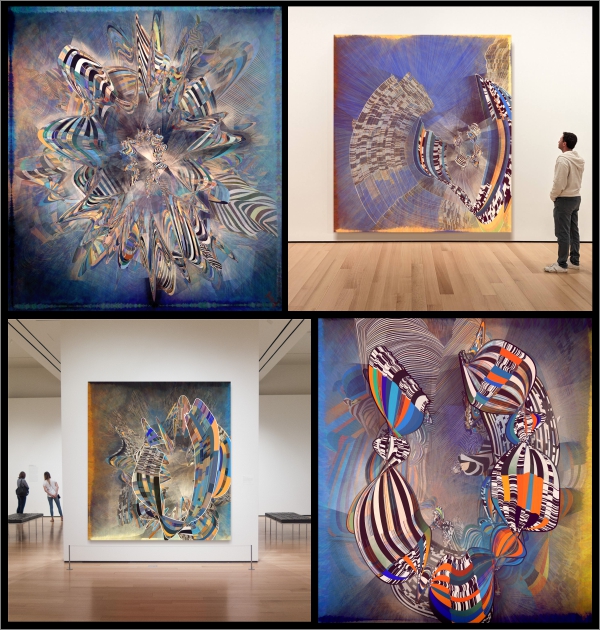
Velum 2 - WIP
Velum 2 generatorSupply and Discounts:
- Supply 100 of 400 (Each Velum movement has a supply of 100)
- Velum 1 holders will receive a 33% discount.
- Next year, holders of both Velum 1 and Velum 2 will get a 66% discount on Velum 3.
- In 2026, holders of a complete set of Velum 1, 2, and 3 will get a 99% discount.
Project Structure:
- The project is planned to be released in four movements over four years, like a generative art symphony.
- Each algorithm is evolved from the previous year.
- The drop is planned to occur on verse.works in early summer using an ascending auction mechanic developed with projects like Mapan's Sketch Book A.
Participation and Incentives:
- Anyone will be able to generate outputs and save them in the week before the drop.
- There will be incentives to share a saved output.
- Anyone can submit their three favorite outputs for final curation.
- From the submitted outputs, the top 100 will be curated by the artist.
- These curated outputs will be randomly assigned to auction winners.
- Creators of the selected outputs will receive a percentage of the final mint price as a thank-you for participating.
Links:
- Velum 1 collection: Velum by Harvey Rayner
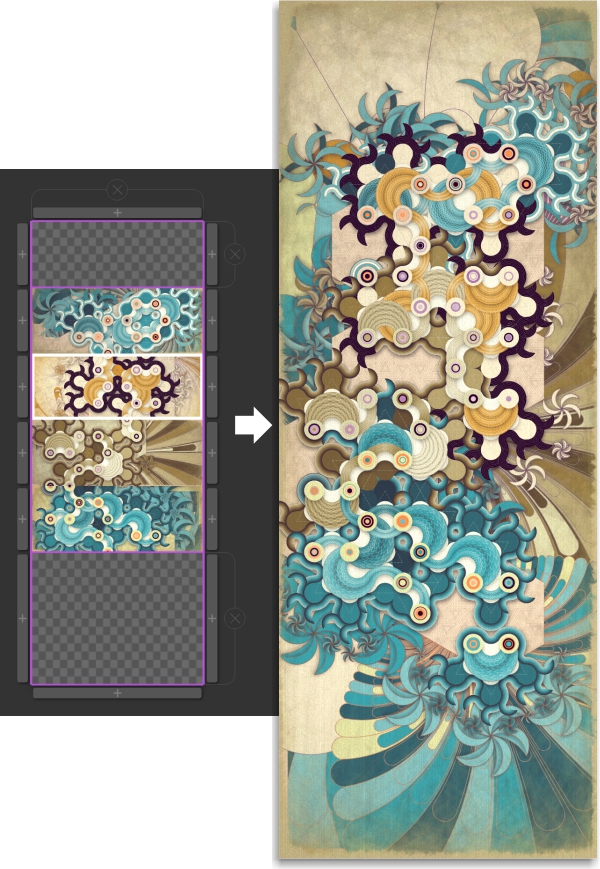
Quasi Dragon Studies - Drop date 22nd August - Verse
Tile sales page on Verse Composite builder on Verse White paper Play with composite builderQuasi Dragon Studies is an art experiment in community co-creation. For 25 years I’ve been exploring ways of compositing sets of simple artworks to form new more complex artistic language and more ambitious compositions. This project is an algorithmic, Web 3 extension of that personal modus operandi.
The rapid evolution of generative art and the attention it has received from the Web 3 community makes it an exciting time to be a creative coder. However, ten years from now I feel the algorithmic approach may just be one of many methodologies in the practice of the new internet native artist. Perhaps what will be seen as the more interesting and seismic revolution in art created in the Web 3 era is the blurring of the boundary between artist and the collecting community. We may be witnessing the early evolution of a new breed of decentralized artists.
In this project, collectors mint art tiles with randomly assigned edge properties that enable them to be joined together to create new artworks using a tool called the Composite Builder. Collectors can choose to participate in the project in two ways:
1. Treat the Composite Builder as a creative playground with the incentive of making the most visually compelling composites and be led by their own artistic instincts.
2. Build composites with strict joining rules, invest time, energy and money to collect specific tiles and create hard-to-make limited edition Black and White Dragons. The incentive here being creating quantifiable rarity which has become a significant feature of Web 3 art.
One open question framed by the project is which incentive does the community care more deeply about?
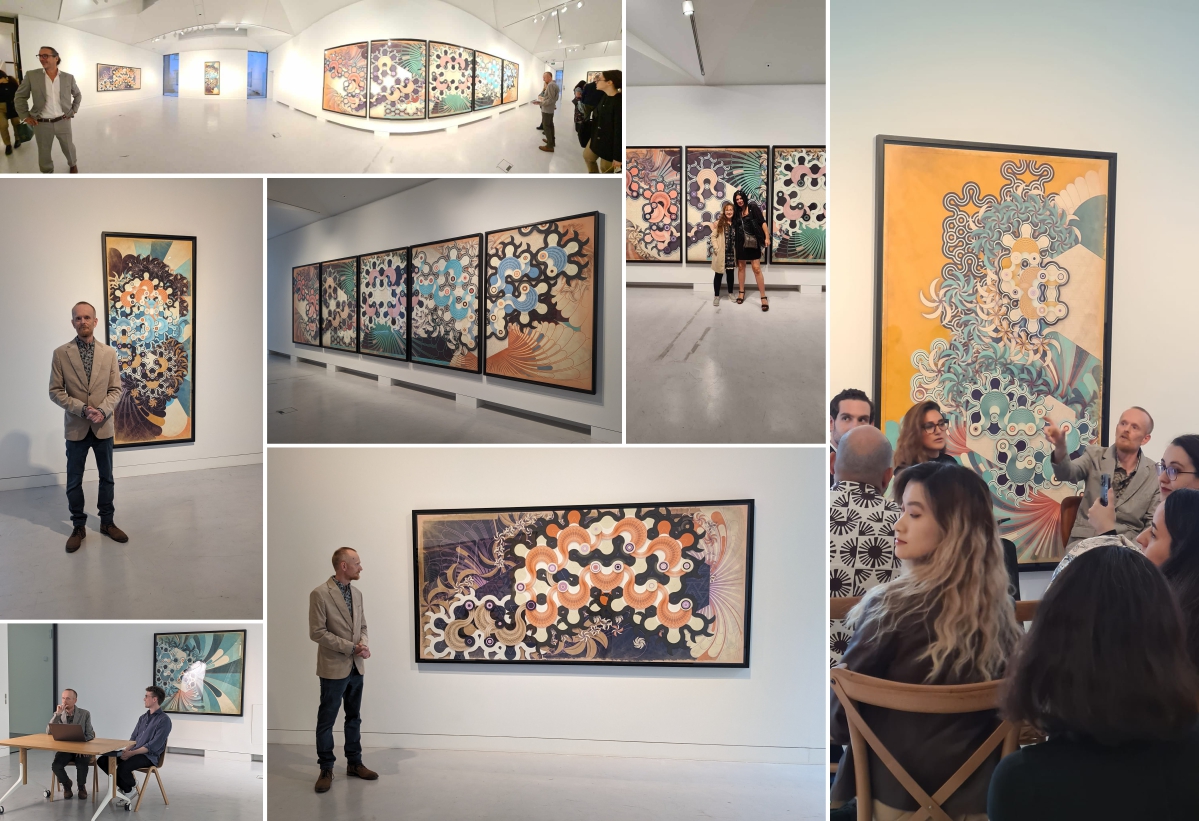
Quasi Dragon Studies Show: Verse - 24–30 July 2023: Verse, 4 Cromwell Place, South Kensington, London
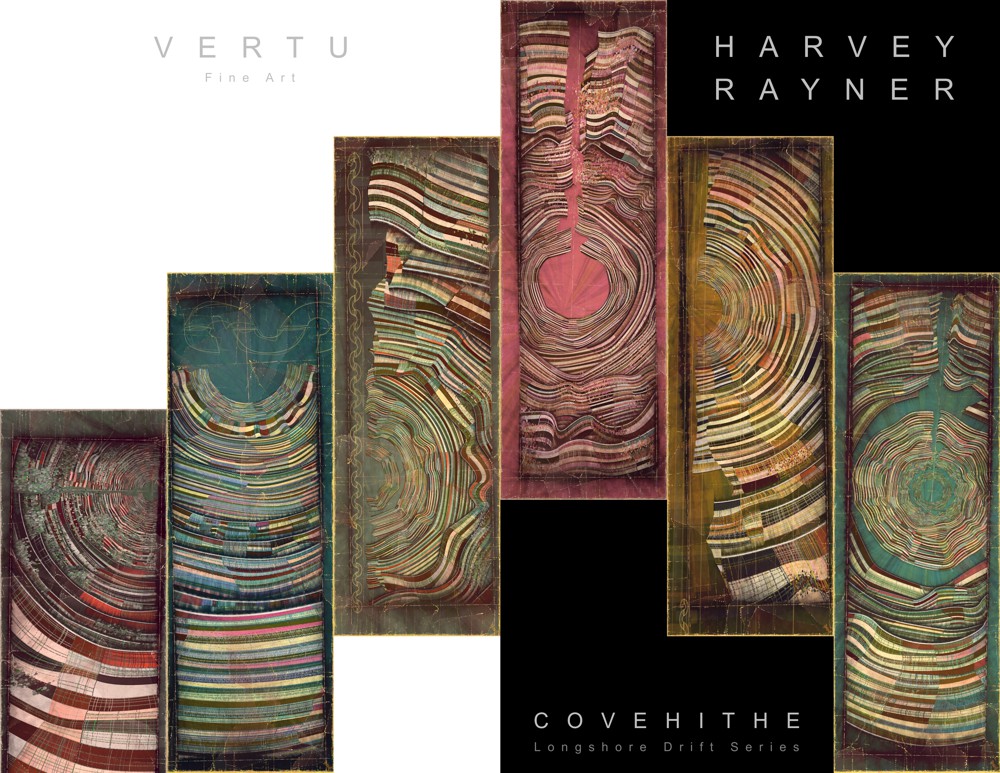
Covehithe (Long shore drift series) - July 13th - 16th 2023: Vertu Fine Art
Covehithe generator Thesis View seriesEmail Vertu Fine art for print details
Series of 60 fine art prints
Cove: a small sheltered bay; a concave arch
Hithe: a small port, harbor or haven especially on a river
Covehithe is an expression of my deep connection to a remote stretch of coastline near my hometown in England. Rather than setting out to create literal landscape scenes I wanted to find a new authentically algorithmic interpretation of the landscape. This means using certain rudiments of landscape art as primitives in a process that is true to generative art making. Covehithe is my most evolved work to-date in terms of combining multiple texture algorithms in an attempt to create surfaces that look like they have been abraded and discolored by the churning of the sea. Another key goal of this work is to capture the sense of nostalgia, mystery and ambiance I associate with Covehithe. This expressly emotive concern I feel has not been explored so much within generative art.
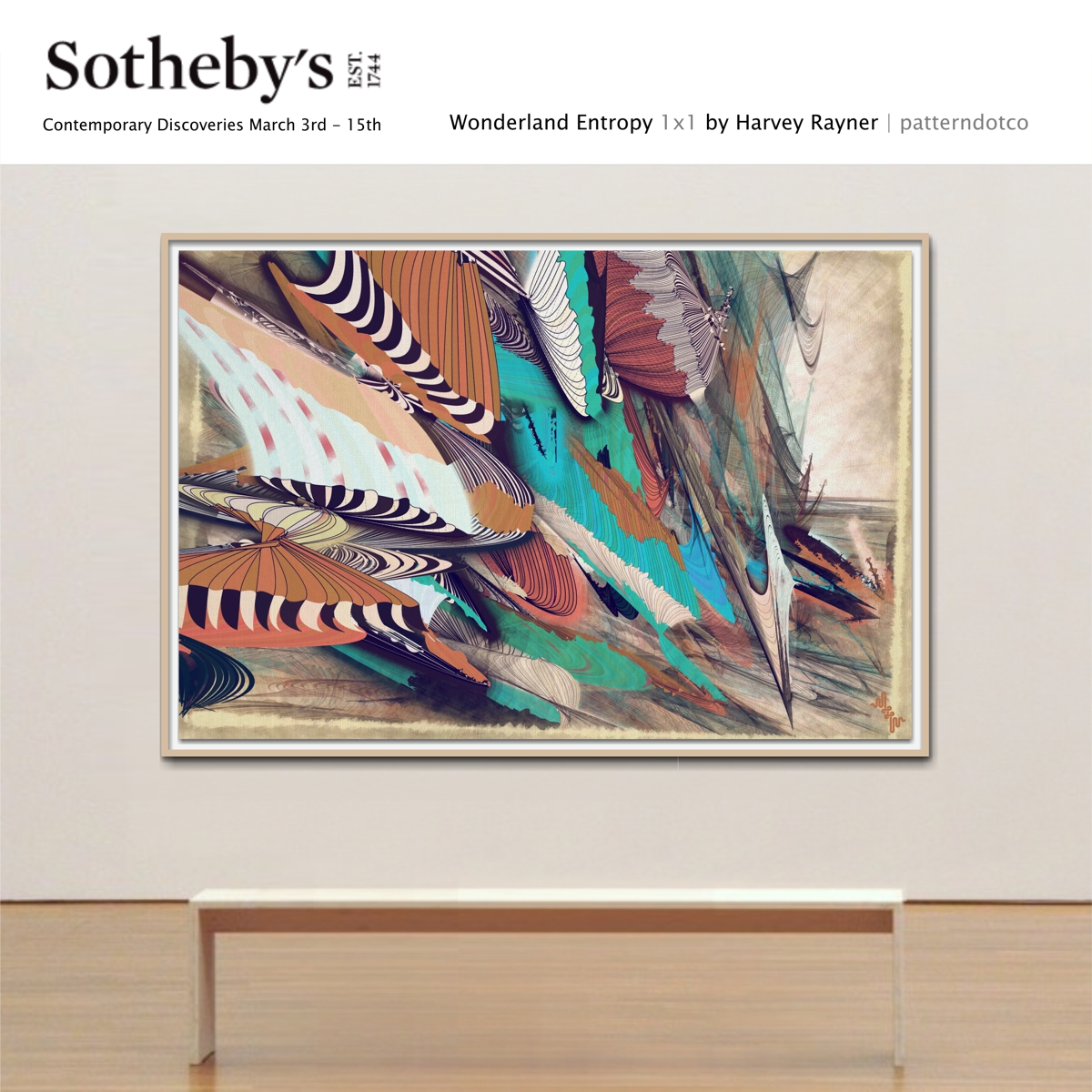
Wonderland Entropy 1of1 - March 2023: Sotheby's
Wonderland Entropy generator ThesisView or Bid now on Sotheby's
A vision I’m calling an Algorithmic Disney dystopia. Vibrant, colorful and energetic forms coupled with a sense of disorder, decay and discoloration. Synthetic cartoonery and ridiculous geometry combined with deep organic texture and waveform entrail-like artifacts. In this visual story I can see a landscape at the edge of a bizarre world both simultaneously jubilant and menacing. A place where the last remnants of structure and order are in the final stages of disintegration. Think alien Disney world being pulled apart in the event horizon of a black hole, being stretched and scrambled into an abyss of eternal entropy. Welcome to my peculiar imagination!
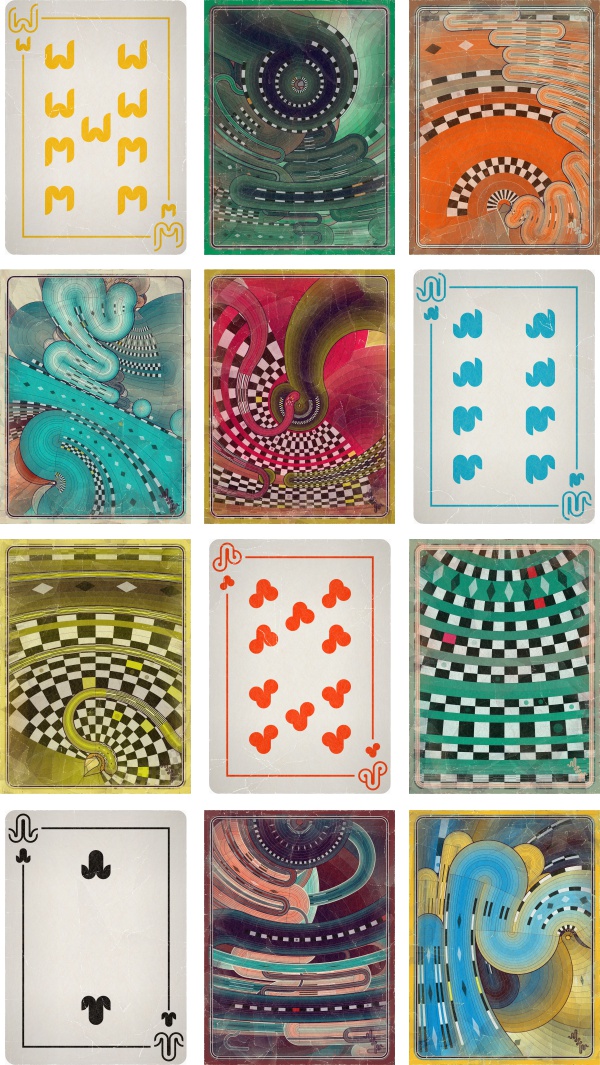
Monte Carlo - dropping 2024
Monte Carlo generatorCommunity co-created minting and meaning
The community is invited to generate outputs from phrases. (Written phases are converted to hashes and art is generated from these). When a great phrase creates a great output it is minted. (There may be a community curation process here too). The community tries phrases that capture what the series expresses to them. In this sense the community helps to articulate and explore the themes of the work. Phrases are passed to the algorithm and printed on each output, providing a title surrogate for the work.
Primary visual themes that I intended
Abiding drivers of both art markets are wealth and status signaling, glamor, gambling and of course beauty, chic and finesse. Gambling and wealth flexing is often not discussed in connection to bluechip art when it is being sold. It is however the elephant in the room. Monte Carlo is a work just about that elephant. To do this in a way that’s not overtly distasteful the work intends to evoke Vintage glamor, 1970s Grand Prix and Monte Carlo Casino, Early James Bond Ritz. The aged retro stylisation is a way to put some distance between us and what would otherwise be an expression of casino bling and a vulgar opulence. When it has a nostalgic patina, somehow it feels more tasteful and artful.
Playing cards
Each output is generated with a pseudo generated playing card of a number between 2 and 10 and a pseudo suit. Collecting a certain ‘hand’ like a flush or straight will unlock new ‘Picture card’ tokens which will be a hybrid of both artwork and pseudo card.
Gallery composite installation
These output groups in turn will form the building blocks of a large composite physical installation created for a gallery context. This will be something like an interactive display of oversize playing cards that can be used to play games. Any dings and scratches created on the works as a result of the audience interactions are viewed as unintentional co-creative artifacts and add to the visual story of the work.
Fractionalized installation
The gallery native installation of the series could be fractionally owned by the token holders and should the work go to auction, profits can be shared with these holders. The other idea is to send Token holders the physical cards once the gallery installation(s) is complete.
A digital and gallery native co-creation experiment
Maybe a good way to grow appreciation and engagement of generative art in the ‘gallery art world’ is by making a single project that has an authentic and exciting expression in both contexts. Ultimately I feel it will be art itself that bridges the cultural gap between Web3 and Trad art and not any amount of evangelism. The right art, I feel, has the potential to reveal a compelling story of LFGart without it being necessary to explain it in terms foreign to non-generative art.
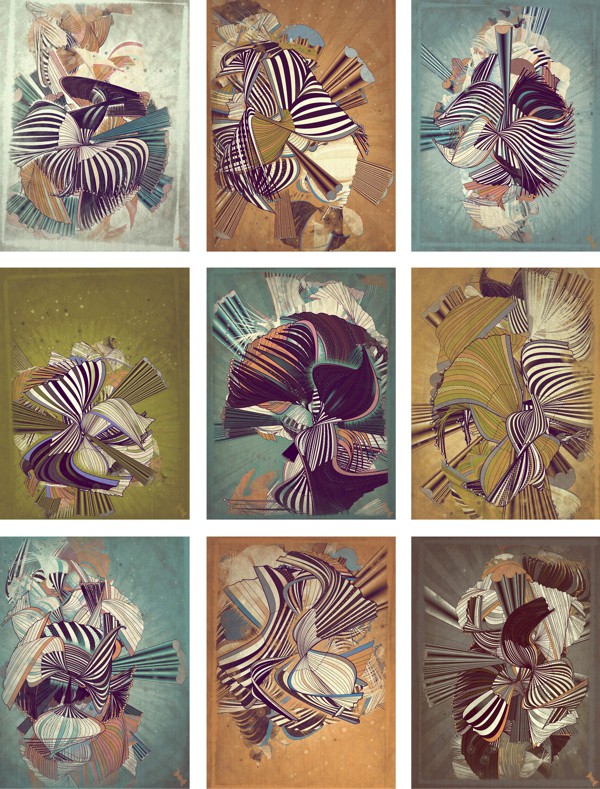
Velum 1 - January 2023: Bright Moments
Velum 1 generator ThesisView on Bright Moments
Purchase on secondary
Velum: Latin for curtain
Inspired by the question: What do you get if you blend the visual DNA of two mid 20th Century artistic movements into a 21st Century generative art algorithm?
The original ideas evolved by Abstract expressionism and Pop art tell very different stories in the history of post war American art. My approach however is more about just stealing from the visual lexicon of mark-making that characterizes these movements ignoring much of the contextual conversations around these works. When I started out building my first primitive for Velum I was picturing in my mind something that looked more like a gestual paint-stroke typical of abstract expressionistic painting. Adding Pop art stylised outlines to the structures however separated them from the background and gave them a floating quality. Liking this effect I quickly forgot about my first idea of making paint strokes to explore the emerging curtain-like elements and found ways to make them dance.
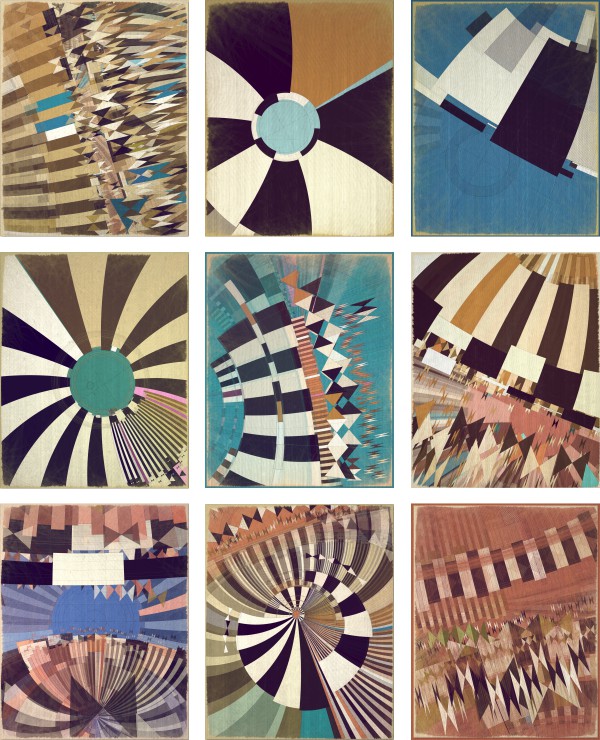
Fontana - October 2022: Art Blocks
Fontana generator Thesis Generative colorView project on Art Blocks
Purchase on secondary
Fontana: Latin for fountain
Fontana is a playful attempt at abstractly capturing the flowing movement of a fountain using precisely drawn elements that evoke a static and considered rendering of a subject that is in constant flux. The visual language is reminiscent of hand-draughted technical drawing, a precise and methodical practice that progresses at a radically different pace to the flowing and capricious movement of water. To increase this tension between dynamic motion and static mechanical process I wanted the surface textures to appear worn and aged like a drawing that has spent its life in the bottom of a mechanics drawer. This process of abrasion and discoloration is occurring on yet another scale of time adding complexity to the references of time passing.
This project does not use preset palettes but applies colors generatively which means every output has a unique color expression. Far from being entirely random however I attempted to create a color algorithm which produces colors that evoked early 20th Century design adding to the sense of aged media.
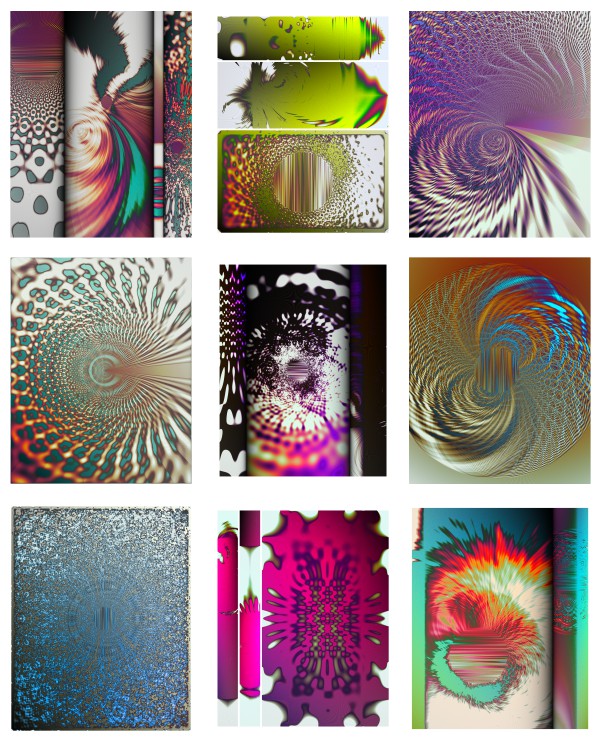
Photon's Dream - June 2022: Art Blocks
Generator Gallery Thesis Features and rarity Top mintsView project on Art Blocks
Purchase on secondary
In physics a photon is a quantum of light. Because it travels at the speed-of-light, time and space as we understand it do not exist for this elementary particle. The Big Bang was an instant ago for the photon and yet it has already traversed the cosmos. Time and space to it is what? It's hard to say. The word non-dual comes to mind.
Some components in Photon’s Dream look like images from an electron microscope. Other parts have a more cosmic or planetary vista. Juxtaposing both creates tension and intrigue where the boundary between fine texture and grand architecture becomes blurred.
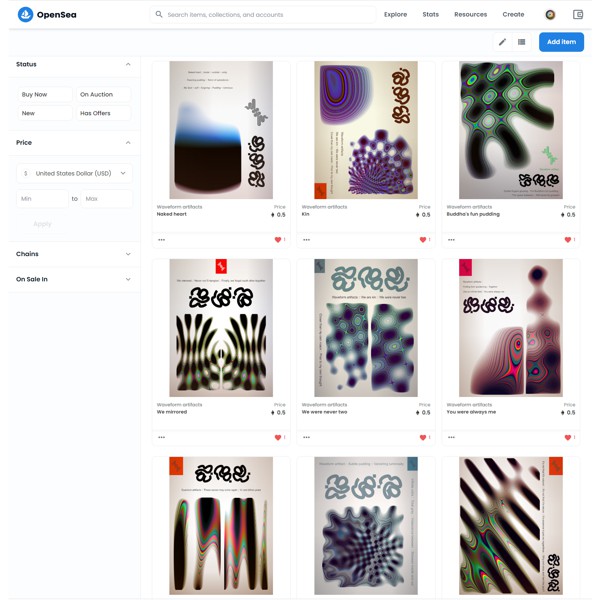
Waveform artifacts 2022
opensea.io/collection/waveform-artifactsWaveformist poetry :: Cyber Zen cypher :: Quasi-generative calligraphy :: Ancient color collection
A collection of semi-generative waveform art experiments and poetry